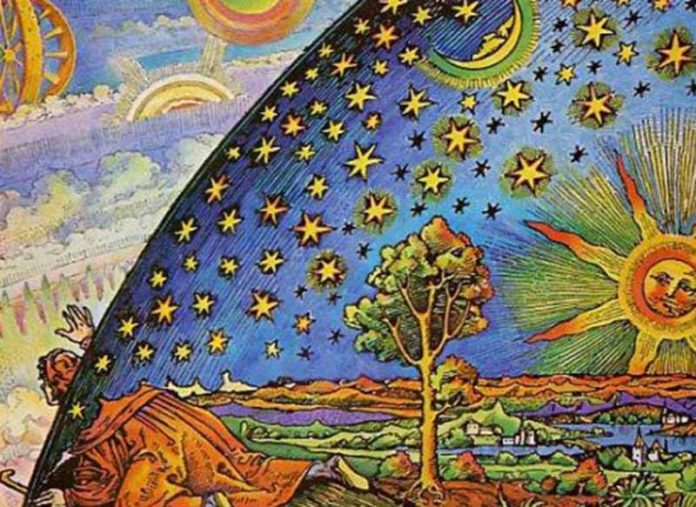
Before speaking of women alchemists, it is helpful to first define alchemy in broad strokes. Alchemy is the precursor to modern science, particularly chemistry, in which the primary goal was to first, transmute base metals into gold by means of the Philosopher’s Stone, and second, to carry forward humanity’s evolution towards perfection both as a part of the natural world and by following a determined and highly symbolized spiritual path.
Much of early alchemy had its roots in Aristotelian thought and Gnosticism. Alchemy was therefore a science that relied on spiritual intuition as a means of discovering the greater truths. Alchemical experiments were conducted in a holistic frame of mind, in which everything from the alignment of the stars, the message of dreams, the weather, and the alchemist’s inner state of soul were gauged.
Women’s Work and Alchemy
Before alchemy evolved towards achieving such lofty goals, however, women were already playing with the distillation process from which they would create perfumes from various crushed flowers, paint their eyelids in khol (made of copper, lead, burnt almond, and soot), dab their lips with a splash of crushed flowers, and whiten their skin with mercury and white lead. Even ugly women could thus be transformed into a beauty, transmuted, as it were, from one state to another.
In addition, the kitchen itself was and continues to be a veritable alchemical factory in which raw materials were cooked over slow fires or quickly seared and ingredients added to transmute these into a meal that was free of bacteria and whose look and taste differed from its original state. Bread would be leavened or not, as the case may be, and the cooking processes alone would transmute raw materials like meat and vegetables, legumes and fish, which uses the same elemental processes used by alchemists – fire, water, air and earth, to create edible, delicious meals.
Isis, Goddess of Alchemists
The Egyptian Goddess Isis, the patron saint of women, mothers and children, was ostensibly goddess of alchemists as well. Women who fabricated cosmetics were known as cosmetae, and when scientific alchemy began to take shape and to aim for greater thing , particularly in the Near East, their work was sometimes considered as opus mulieres, that is, women’s work.
Maria Prophetissa, Creator of Lab Equipment
Somewhere between the third and first centuries BC,Maria Prophetissa emerged as a true scientific alchemist. A follower of Aristotelian natural philosophy and a gnostic, she believed that even metals were either male or female and contained a soul. All her efforts were considered by her as a form of sexual procreation. Her famous axiom is ‘One becomes two, two becomes three, and out of the third comes the fourth, the One.’ She imbued her experiments with colour using a procedure called keratosis, which is still used today.
Maria, also known as Mary the Jewess, lived in Hellenic Egypt when the sciences, philosophy and literature reached their zenith in the ancient world from the time Ptolemy I founded the Great Library in Alexandria. She experimented with sulfur and mercury, the two elements vital in creating the Philosopher’s Stone, which in turn could transmute base metals into gold. She has been touted has having discovered hydrochloric acid and phosphorus.
In order to do her experiments, Maria created lab equipment that had its roots in the preparation of cosmetics and cookery. Among other things, she is credited with inventing the bain-marie, or double-boiler, which is still used both in the kitchen and the lab. She invented the still, called an alembic, and a three-armed still, the tribikos. Maria Prophetissa is considered as the mother of alchemy.
Marie Curie, the First Great Female Scientist
It would be over 2000 years before another Maria would once again have the full authority and freedom to experiment in the lab and to overwhelmingly contribute to science and the wellbeing of mankind. Marie Curie (1867-1934), the Polish-born scientist, together with her husband Pierre Curie, won the Nobel Prize in Physics in 1903 for their work on radiation, and then in 1911, she won the Nobel Prize in Chemistry for her work on radioactivity, which led to isolating isotopes for the treatment of cancer.
Marie Curie remains to this day one of the greatest successors of a science so humbly begun in the domestic cares of women and to the intellectual and practical curiosity of Maria Prophetissa.
Sources:
- Martin, Sean, Alchemy & Alchemists, Chartwell Books, Inc., Edison, NJ @ 2006.







